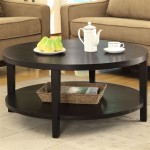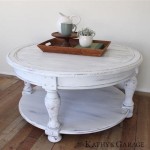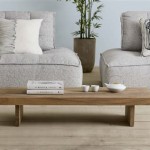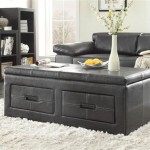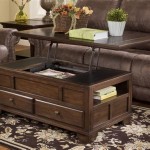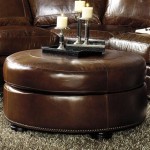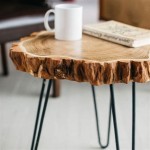How to Decorate a Coffee Table in Your Living Room
The coffee table, often the focal point of a living room, provides a surface for beverages, books, and decorative objects. Its aesthetic impact significantly influences the overall ambiance of the space. A well-decorated coffee table enhances the room's style and functionality. This article outlines key principles and practical strategies for effectively decorating a coffee table.
Scale and Proportion: Establishing a Foundation
Before introducing any decorative elements, determining the appropriate scale and proportion is critical. The coffee table should complement the size and configuration of the surrounding furniture, particularly the sofa and chairs. A coffee table that is too large can overwhelm the space, while one that is too small can appear insignificant. Ideally, the coffee table should be approximately two-thirds the length of the sofa.
The height of the coffee table is also important. It should be roughly the same height as the seat cushions of the sofa, or slightly lower. This allows for ease of access and maintains visual harmony. Avoid coffee tables that are significantly taller or shorter than the surrounding seating.
Consider the shape of the coffee table in relation to the room's layout. A rectangular coffee table generally works well with a rectangular sofa, while a round or oval coffee table can soften the lines of a more angular space. Square coffee tables are often suitable for smaller living rooms or when paired with a sectional sofa.
Once the appropriate scale and proportion have been established, focus on selecting decorative items that are also appropriately sized. Avoid objects that are disproportionately large or small, as these can disrupt the visual balance.
Creating Visual Balance: The Rule of Thirds and Layering
The arrangement of decorative objects on a coffee table should adhere to principles of visual balance. The rule of thirds, a fundamental concept in design, can be applied to create a visually appealing composition. Imagine dividing the coffee table into thirds both horizontally and vertically, and then strategically placing objects at the points where these lines intersect. This creates a sense of balance and harmony.
Layering is another technique for adding visual interest and depth. Start with a base layer, such as a tray, a stack of books, or a decorative runner. This provides a foundation for other objects and helps to define a visual zone. Next, introduce objects of varying heights and textures. A tall vase, a stack of books, and a small decorative object can create a dynamic and engaging arrangement.
Consider the use of negative space – the empty areas around and between objects. Too many objects can create a cluttered and overwhelming appearance. Allow for some breathing room between items to create a sense of calm and balance. Experiment with different arrangements to find the composition that best suits the overall aesthetic of the room.
Symmetry and asymmetry are two approaches to achieving visual balance. A symmetrical arrangement, where objects are mirrored on either side of a central point, can create a formal and structured look. An asymmetrical arrangement, where objects are intentionally placed off-center, can create a more relaxed and informal feel. The choice between symmetry and asymmetry depends on the desired aesthetic and the overall style of the room.
Selecting Decorative Elements: Functionality and Aesthetics
The selection of decorative elements should be guided by both functionality and aesthetics. The coffee table should not only look good but also serve a practical purpose. Consider the activities that typically occur in the living room and choose objects that support those activities.
Books are a classic and versatile decorative element. Choose books that reflect personal interests or complement the overall style of the room. Hardcover books are generally more visually appealing than paperbacks and can be stacked to create varying heights. Arrange the books by color, size, or topic to create a cohesive look.
Trays provide a functional and stylish way to contain smaller objects, such as remote controls, coasters, or candles. Choose a tray that complements the overall style of the room. Metal trays can add a touch of sophistication, while wooden trays can create a more rustic feel. Use the tray to group related items together, creating a sense of order and organization.
Candles and lanterns can add warmth and ambiance to the living room. Choose candles with scents that are complementary to the overall atmosphere. Use candleholders that are both functional and aesthetically pleasing. Lanterns can add a touch of drama and can be used to create a focal point on the coffee table.
Plants and flowers can bring life and freshness to the living room. Choose plants that are appropriate for the lighting conditions of the room. Succulents and cacti are low-maintenance options that can add a touch of greenery. Fresh flowers can add a pop of color and fragrance. Arrange the plants and flowers in decorative pots or vases that complement the overall style of the room.
Decorative objects, such as sculptures, figurines, or bowls, can add personality and interest to the coffee table. Choose objects that reflect personal taste and complement the overall style of the room. Avoid objects that are too small or too fragile, as these can easily get lost or broken. Consider the texture and material of the objects, and choose items that create visual contrast and interest.
Personalized items, such as family photos or travel souvenirs, can add a personal touch to the coffee table. Choose items that are meaningful and that tell a story. Avoid displaying too many personal items, as this can create a cluttered and overwhelming appearance. Instead, choose a few carefully selected items that reflect personal style and experiences.
Color Palette and Texture: Refining the Design
The color palette and texture of the decorative elements should complement the overall color scheme and style of the living room. Choose colors that are already present in the room, such as those found in the sofa, rug, or artwork. Use these colors to create a cohesive and harmonious look.
Consider the use of complementary colors, which are colors that are opposite each other on the color wheel. Complementary colors can create a sense of visual excitement and can add a pop of color to the room. For example, blue and orange are complementary colors, as are red and green.
Monochromatic color schemes, which use different shades and tints of a single color, can create a sophisticated and elegant look. Choose a color that is already present in the room and then use different shades and tints of that color to decorate the coffee table.
Texture is another important element to consider. Use a variety of textures to create visual interest and depth. For example, combine smooth and rough textures, or soft and hard textures. A combination of textures can add a tactile dimension to the room and can make the coffee table more inviting.
Consider the material of the decorative elements. Use a variety of materials, such as wood, metal, glass, and ceramics, to create visual contrast and interest. A mix of materials can add a sense of sophistication and can make the coffee table more visually appealing.
The lighting in the room can also affect the way the colors and textures appear. Consider the placement of lamps and other light sources when choosing decorative elements. The lighting can enhance or detract from the overall look of the coffee table.
By carefully considering the color palette and texture of the decorative elements, a cohesive and visually appealing coffee table arrangement can be created that complements the overall style of the living room.

27 Coffee Table Decor Ideas How To Style A Modern

27 Coffee Table Decor Ideas How To Style A Modern

15 Designer Tips For Styling Your Coffee Table

Ten Tips On Decorating Your Coffee Table Through My Front Porch

Easy Coffee Table Styling Like A Designer Joyful Derivatives

15 Designer Tips For Styling Your Coffee Table

The Basics Of Coffee Table Styling Shades Blue Interiors

Modern Coffee Table Decorating Ideas For Your Living Room

27 Coffee Table Decor Ideas How To Style A Modern

20 Super Modern Living Room Coffee Table Decor Ideas That Will Amaze You Feelitcool Com Rooms Home
Related Posts

